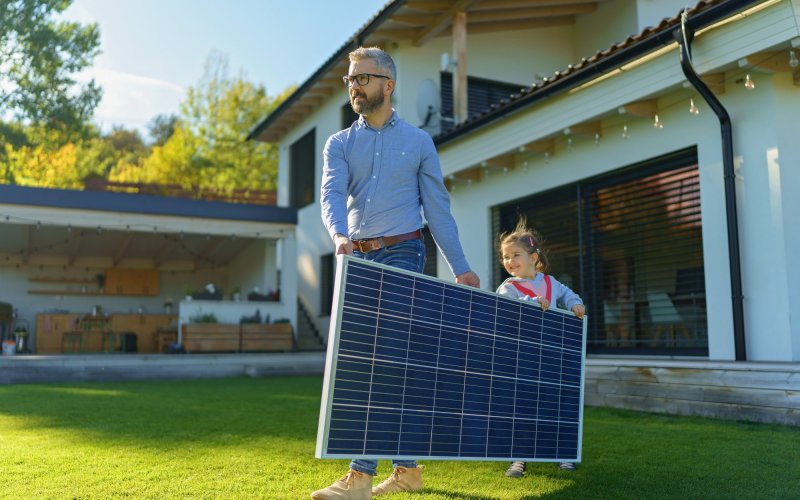The photoelectric phenomenon inside the photovoltaic panel takes place every time the sun’s rays fall on it. Then the panel produces electricity that, for example, lights a light bulb, charges a mobile phone or cooks soup. But when the panel is not connected to the grid and no one is taking electricity from it, what is actually happening inside it?
A photovoltaic cell is a thin wafer of silicon modified to function as a semiconductor photodiode. When a photon hits its surface, it transfers its energy to one of the electrons, which is released from its electron shell. When enough electrons accumulate, a voltage is generated at the output of the photovoltaic cell. We can connect a load to it (such as a light bulb or a kettle) and a current will begin to flow through the circuit.
If we do not connect anything to the photovoltaic panel, the photovoltaic phenomenon takes place anyway. Photons fall on the surface of the cell, transfer their energy to it, free electrons are created in the cell and its energy increases. Since energy cannot be lost, only transformed into some other form, this unused energy is converted into heat. The temperature of the photovoltaic cell not connected to the grid rises. However, since the panels are thin plates, very often exposed to the cooling effect of the surrounding air, they are able to get rid of the excess heat. They will get warm, but not overheated and they most certainly won’t melt. So an unconnected panel is only slightly warmer than a connected one.
However, voltage builds up at the output from the disconnected panel, which could discharge into a person, for example, if handled carelessly. Therefore, it is better not to leave unconnected panels exposed to light and to be careful when handling them.
Want to ask something?
Send us an e-mail with the subject “Physics mysteries” to the address:
We can't wait to tackle your interesting questions!





